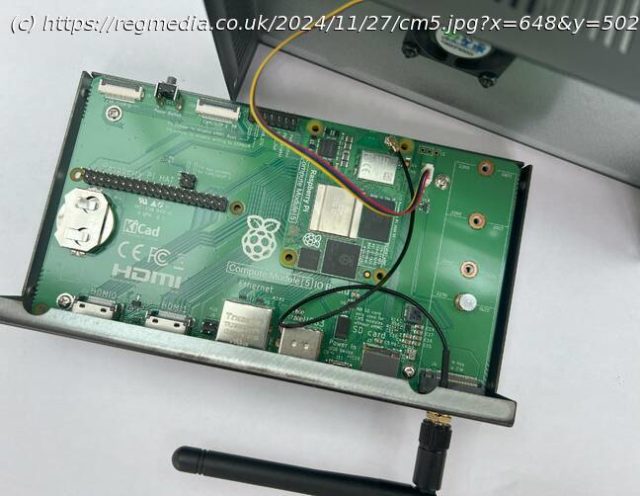Same form factor, more performance for industry
The Raspberry Pi maker has rounded off a busy few weeks with the launch of an updated Compute Module 5 – it has the same form factor but considerably more power than the previous generation.
The Compute Module 4 turned up in 2020, a year after the Raspberry Pi 4. The Compute Module 5 has followed a similar pattern, arriving just over a year after the Raspberry Pi 5 debuted.
However, while the Compute Module 4 was joined by the 4S and a return to the previous DDR-SODIMM form factor; the Compute Module 5 (CM5) is mechanically almost identical to the 4. Just considerably swifter, thanks to the Pi 5 silicon.
The CM5 uses a BCM2712 Cortex-A76 64-bit SoC running at 2.4 GHz and has memory options from 2 GB through to 16 GB of SDRAM, although the latter won’t arrive until 2025, and 8, 16, 32, or 64 GB of eMMC flash memory. There is also a CM5Lite version with no eMMC flash memory.
Raspberry Pi provided The Register with a 4 GB version of the CM5 with 32 GB of eMMC storage. The computer came as part of a development kit that includes an IO case, a chunky heat sink, an IO board (pre-fitted inside the case), an antenna kit, a power supply, and a selection of cables.
What it didn’t include was a jumper to stop the CM5 from attempting to boot off an empty eMMC, emphasizing the fact that the CM5 – like its predecessors – is not aimed at the casual hobbyist who might just fit an SD card into a Pi. Compute Modules have no such frippery. Indeed, while the IO board does have an SD card slot, it is designed for CM5Lite modules.
Still, anyone buying a CM5 and IO board for development purposes will likely have the necessary components to hand prior to a session with rpiboot and plugging in the USB cables that were bundled with the Development Kit. We found getting Raspberry Pi OS installed on the eMMC followed the same process as getting previous generations up and running.






